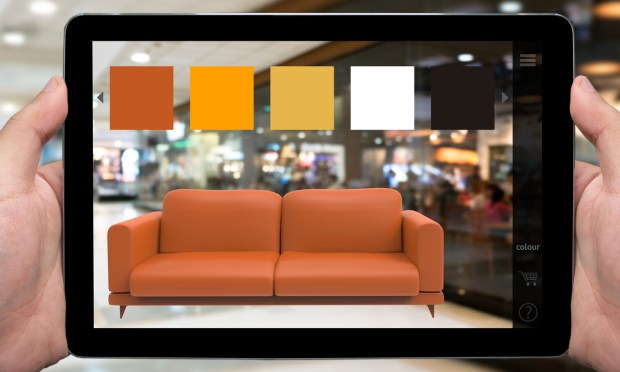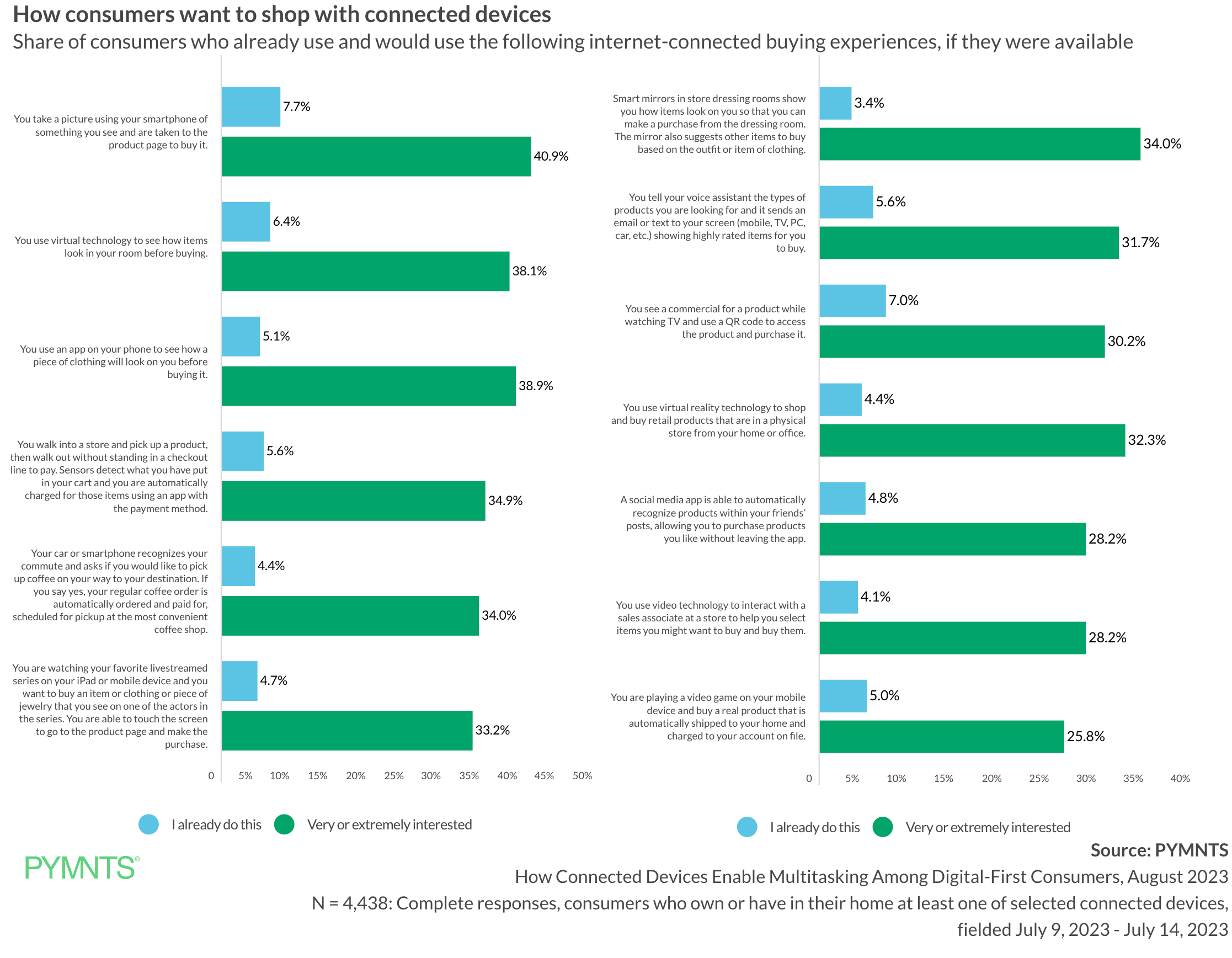31% of Consumers Want VR to Recreate Brick-and-Mortar Shopping

As retailers look for ways to merge the brick-and-mortar and eCommerce experiences, many shoppers are open to using virtual reality (VR) to bridge the gap.
By the Numbers
The PYMNTS Intelligence study “How We Will Pay Report: How Connected Devices Enable Multitasking Among Digital-First Consumers” drew from a survey of more than 4,600 U.S. consumers to learn how digital-first consumers are using connected devices and apps to carry out various tasks.

The results revealed that among the 95% of consumers who own or have in their home at least one internet-connected device, 1 in 3 reported being very or extremely interested in using VR technology to shop and buy retail products that are in a physical store from their home or office. Additionally, 4% said that they already do this.
The Data in Context
VR and other forms of bridging the digital and the physical are slowly catching on across retailers.
For instance, footwear and accessories label Manolo Blahnik has a virtual room online that commemorates the world of artistry and skilled craftsmanship. The online virtual experience, called “The Manolo Blahnik Archives: The Craft,” puts the spotlight on eight elements of the shoemaking process and provides insight into Blahnik’s creative voyage, commencing with the initial sketches and extending to the masterful craftsmanship in its Italian workshop.
Plus, in June, apparel retailer J. Crew unveiled its inaugural immersive shopping experience in collaboration with the eCommerce platform Obsess. Using Obsess’s technology, the collaboration introduces 3D virtual stores that customers can effortlessly access from their smartphones or laptops.
With the increasing interest and adoption of VR technology among consumers, retailers have an opportunity to differentiate themselves and provide a competitive edge in the market. By embracing these emerging technologies, retailers can stay ahead of the curve and meet the evolving demands of digital-first consumers.
